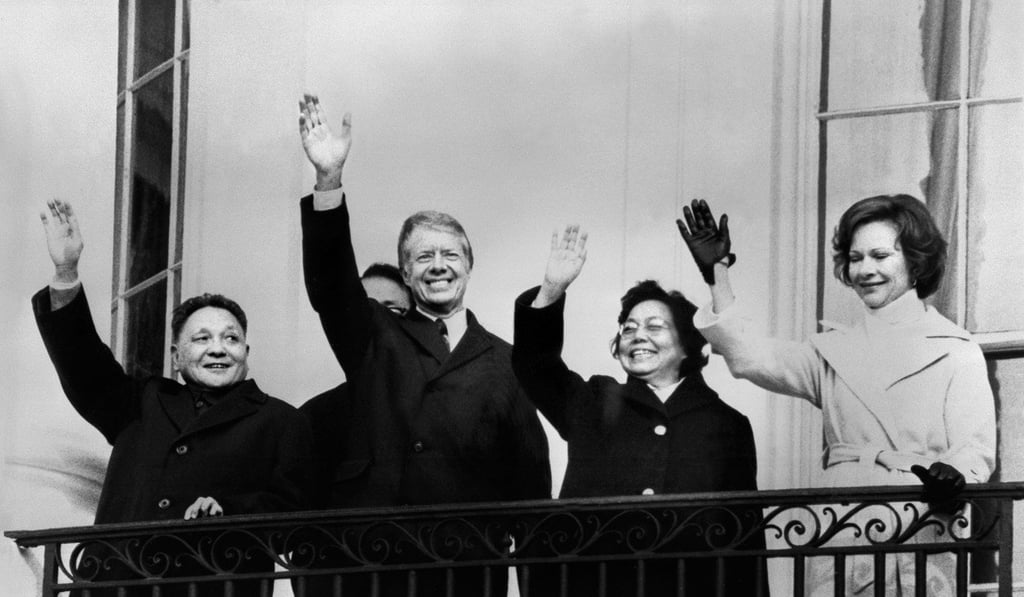Advertisement
‘America first’ shouldn’t stop the US from welcoming Chinese students and other global talent
Vasilis Trigkas says US protectionism in the form of visa restrictions on Chinese seeking to study in American universities would only harm the country, which has long benefited from being able to attract top talent
Reading Time:4 minutes
Why you can trust SCMP
0

Almost half a century after the “Nixon shock”, when US President Nixon unilaterally declared that the United States would abandon the dollar’s convertibility to gold and impose a 10 per cent import surcharge, the world is now being shaken by the “Trump shock”. While Nixon targeted the European and Japanese trade surpluses, this time, the epicentre of the president’s rage is China’s strategic protectionism, which compels US corporations to transfer technology in return for access to the world’s most populous market.
The US administration has gone to great lengths to quantify the damage that Chinese techno-protectionism has caused to American industry and puts the bill at more than US$60 billion per year – the value of Chinese imports that President Donald Trump chose to apply retaliatory tariffs on. While there are indeed reasonable concerns about China’s coercive treatment of US and European companies and its draconian market access regulations, the proclamation that China’s success is based on technology theft to the detriment of US society does not do justice to the genuine efforts of the Chinese people to modernise the country.
Trump’s policies make a fully convertible yuan by 2020 impossible, say financial experts
Anyone for table tennis? Five decades of major milestones in China’s diplomatic ties with US
At the core of China’s accomplishments in science and technology have been hardworking students and researchers who studied in universities across the US. As President Jimmy Carter put it, recalling a classic incident characterising the US-China rapprochement of the late 70s: “One night, the phone rang about 3 o’clock in the morning, and I thought ‘Oh my, there’s a tragedy somewhere in the United States ... It was my national science advisor. He said, ‘Deng Xiaoping insisted I call you now to see if you would permit 5,000 Chinese students to come to American universities.’ And I said, ‘Tell him to send a 100,000.’”
The US out-innovated both Nazi Germany and the Soviet Union, for it remained a beacon of liberty able to attract the world’s smartest people
Since then, the number of Chinese students who attend US universities has risen exponentially, surpassing 320,000 in 2015-16. Undergraduate and postgraduate students are usually self-funded and contribute substantially to the revenues of American universities – income that is reflected in the US trade of services surplus with China. Those enrolled in doctoral programmes are usually sponsored by US-based foundations, but their selection is meritocratic and their contribution to US scientific excellence essential. US universities have long been leaders in cutting-edge research mostly due to their ability to attract the world’s brightest researchers, evaluate their work purely by its scientific merit and build a cosmopolitan community of scientists in their laboratories.
While many Chinese researchers in some of America’s most prestigious universities have chosen to stay in the US and work in Silicon Valley or pursue an academic career, others have returned to China, sharing ideas and knowledge with their compatriots. This transfer of knowledge and research methodology has been the catalyst for China’s meteoric rise in innovation and technology rankings. Some of the stellar science professors at Tsinghua University, which now ranks higher than MIT in computer science and engineering, according to the US News and World Report, have been US educated while others have been visiting researchers at top US research laboratories.
How innovative China’s growing pains point to an urgent need for IP know-how

How Chinese overseas students are learning harsh life lessons
Advertisement